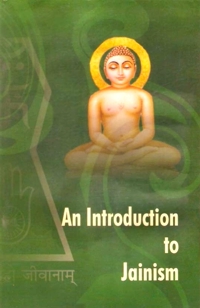Non-violence
The first & foremost principle of Jain philosophy is nonviolence (ahiṃsā). Non-violence means not to kill or hurt any living being by the body, speech or mind. It is possible only for those persons who dedicate their whole life on the basis of Mahāvratas and who have renounced their household life.
There are three kinds of violence:
1. Āraṃbhajā hiṃsā - The violence perpetrated during agriculture or professional activities such as commerce, industry etc..
2. Virodhajā hiṃsā - The violence perpetrated for defense against aggression.
3. Saṅkalpajā hiṃsā - The violence perpetrated by intention and activities premeditated.It is not incumbent upon a lay follower to eschew the first two kinds of violence. But it is necessary for him to renounce the third kind, of course, by gradually minimizing it.
First of all one should shun all thoughts leading to saṅkalpajā hiṃsā coming to his mind out of attachment or version. An awakened lay follower would also try to avoid the first two kinds of violence as for as possible. At least, he would not indulge in such violence, which result in environmental destruction.
The minor vow called 'Ahiṃsā Anuvrat’ prescribed by Lord Mahāvīra is an effective step in the direction of creating a healthy society.
Non-possession
The principle of non-possession is even more important than that of non-violence. It actually signifies the limiting of desires and accumulation of wealth. But many a people do not know much about it. Generally people say that nonviolence is the fundamental principle of Jainism, and quote the aphorism - 'ahiṃsā paramo dharmaḥ' which is however not from a Jain scripture, but from the Vedic literature. In fact, according to Mahāvīra, aparigraha is more fundamental, because the root cause of violence is parigraha or possessiveness.
A person perpetrates violence due to desire for possession. It is the main requirement of life. A man cannot sustain his life without it. The craving for more possessions make people indulge in violence. The greed for money, land etc. and craze for acquiring more things are the root causes of violence. So non-violence is secondary whereas non-possession is the main principle of Jain philosophy.
One cannot understand Lord Mahāvīra's conception of non-violence until and unless he comprehends his principle of non-possession. Violence and acquisitiveness go hand in hand.
Once the Chief Disciple Gautam asked Lord Mahāvīra.
Gautam: "Lord! Can man attain enlightenment?"
Mahāvīra:
"Yes he can."
Gautam:
"Lord! How can he do so?"
Mahāvīra:
"By renouncing violence and possession."
Gautam:
"Can man be spiritual?"
Mahāvīra:
"Yes, he can."
Gautam:
"Lord! How can he do so?"
Mahāvīra:
"By renouncing violence and possession."
 Sadhvi Vishrut Vibha
Sadhvi Vishrut Vibha

